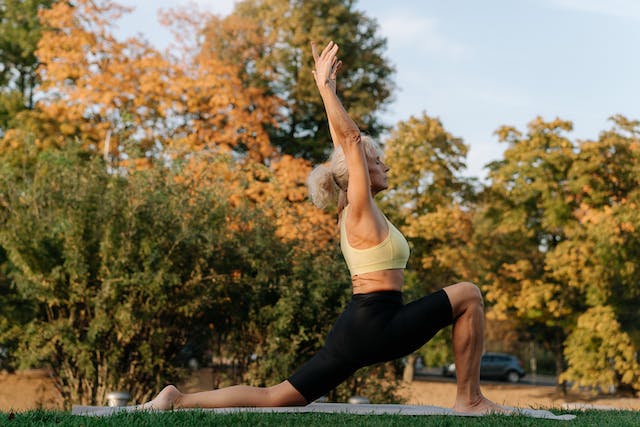
In the rush of modern life, it becomes increasingly important to find balance and harmony within ourselves. The cacophony of demands and distractions can leave us feeling overwhelmed, disconnected, and out of touch with our own essence. It is in these moments that the ancient practices of meditation and yoga emerge as powerful tools for restoring our equilibrium and fostering a deep connection between our mind and body.
Meditation, at its core, is the art of stilling the mind and turning our attention inward. By cultivating a state of mindfulness, we invite a profound sense of peace and clarity into our lives. In a world that constantly bombards us with stimulation, meditation offers a sanctuary where we can retreat to rediscover our true nature. It allows us to observe our thoughts without judgment, to embrace the present moment, and to find solace amidst the chaos.
Yoga, on the other hand, is an embodiment practice that unites movement, breath, and meditation. It is a holistic approach that acknowledges the interconnectedness of mind, body, and spirit. Through a series of postures and flows, yoga moves us beyond the limitations of the thinking mind and encourages us to explore the depths of our physical and emotional sensations. As we move and breathe with intention, we tap into our own inner energy, embracing the fluidity of life and the ever-changing landscapes of our being.
Historical Roots of Meditation and Yoga
Meditation and yoga have deep historical roots, dating back thousands of years. Understanding where these practices originated helps us appreciate their significance.
Meditation, one of the ancient mind-calming practices, has been around for centuries. It began in various ancient civilizations, including India, China, and Egypt. People from these places used meditation to find inner peace and connect with their inner selves. They realized that calming the mind was vital for overall well-being.
Yoga, like meditation, emerged in ancient times, mainly in India. Yoga is closely linked with meditation. It started as a way for people to strengthen their bodies and minds. Yoga involves physical postures (asanas) and breath control (pranayama), which are interconnected with meditation to achieve a balanced and healthy life.
Over time, meditation and yoga became intertwined. The practice of yoga often includes a meditative component. The philosophies and teachings of yoga emphasize the importance of meditation in achieving a deeper understanding of the self and the universe. This historical connection between meditation and yoga highlights the harmony they bring to both mind and body.
The Science Behind Meditation and Yoga
Meditation and yoga are not just ancient traditions. They also have a solid scientific basis. Understanding the science behind these practices can help us appreciate their effects on our minds and bodies.
Understanding the Mind-Body Connection
Meditation and yoga are deeply rooted in the idea that the mind and body are closely connected. Our thoughts and feelings can affect our physical well-being. Likewise, our physical health can influence our mental state. Meditation and yoga aim to harmonize this relationship, promoting both mental and physical health.
The Role of the Nervous System
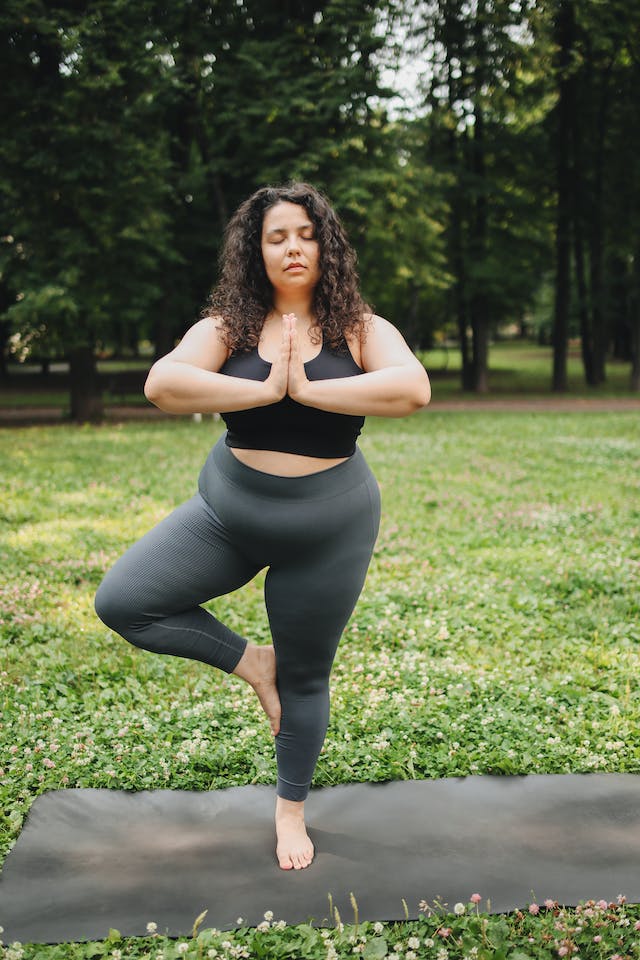
Our nervous system plays a crucial role in how meditation and yoga work. When we’re stressed, the “fight or flight” response is triggered, which can cause physical tension and mental unease. Yoga and meditation activate the “rest and digest” response, calming the nervous system, reducing stress, and promoting relaxation.
Numerous scientific studies have delved into the effects of meditation and yoga. They have found that regular meditation can reduce stress hormones.
It can also lower blood pressure, and improve mood. Yoga, with its physical postures and controlled breathing, has been shown to increase flexibility, balance, and strength while reducing anxiety and depression.
One reason why these practices are effective is that they encourage us to be mindful. Mindfulness means paying close attention to the present moment, which helps calm our minds and reduces stress. This is why these practices are often used as a part of therapy for various mental health conditions.
Benefits of Meditation and Yoga
Yoga and meditation offer a wide range of benefits for both the mind and the body. Let’s explore some of the valuable advantages of practicing meditation and yoga regularly.
- Stress Reduction: One of the most significant benefits of meditation and yoga is their ability to reduce stress. These practices encourage you to relax, focus on the present, and let go of worries. This can lower stress levels and help you feel calmer.
- Improved Focus and Concentration: These practices teach you how to concentrate your mind. This increased focus can enhance your ability to concentrate on tasks, leading to better productivity and a clearer mind.
- Emotional Well-Being and Mindfulness: Regular practice promote emotional well-being by helping you become more aware of your emotions. This mindfulness allows you to manage your feelings better and respond to life’s challenges with greater ease.
- Enhanced Flexibility and Strength: Yoga, with its various postures and stretches, can improve flexibility and strengthen your muscles. Over time, you’ll notice increased mobility and a stronger body.
- Pain Management and Injury Prevention: Yoga helps in relieving chronic pain, such as back pain and arthritis. It also helps prevent injuries by improving posture and body awareness.
- Improved Cardiovascular and Respiratory Health: Some forms of yoga involve controlled breathing exercises that enhance lung capacity and oxygenate the body. This leads to better cardiovascular health and more efficient breathing.
The beauty of meditation and yoga lies in their ability to improve both mental and physical well-being simultaneously. These practices promote relaxation, enhance concentration, and foster emotional stability. Additionally, yoga helps improve physical health, making you more flexible, resilient, and less prone to injury. The combination of these mental and physical benefits makes meditation and yoga valuable tools for overall wellness.
Techniques of Meditation and Yoga
These practices have various techniques, each with its own unique approach to achieving mental and physical harmony. Let’s delve into some of these techniques and how they contribute to the overall well-being of individuals.
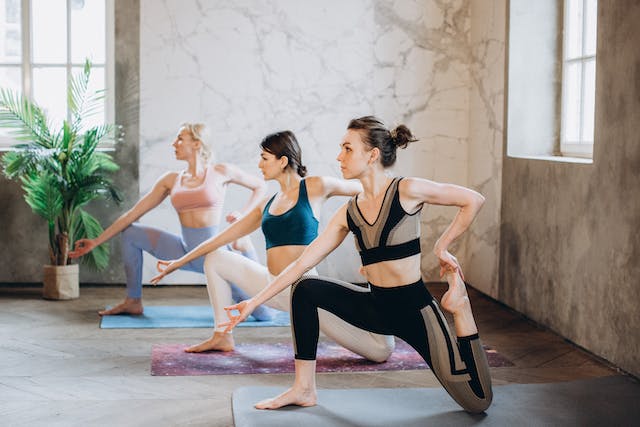
Meditation Techniques:
- Mindfulness Meditation: In mindfulness meditation, the focus is on being fully present in the moment. You pay attention to your thoughts, sensations, and emotions without judgment. This technique helps you become more aware of your inner world and promotes relaxation.
- Transcendental Meditation: Transcendental meditation involves silently repeating a specific mantra (a word or sound) to help your mind transcend ordinary thinking and reach a state of deep relaxation. It can reduce stress and anxiety, promoting a sense of inner calm.
- Loving-Kindness Meditation: This meditation involves generating feelings of love and compassion, not only for yourself but also for others. It cultivates positive emotions and improves relationships with yourself and those around you.
Yoga Techniques:
- Asanas (Postures): Yoga incorporates various physical postures and stretches, known as asanas.
These postures help improve flexibility, strength, and balance. Each asana has specific benefits for different parts of the body, and they can be modified to suit individual needs and abilities.

- Pranayama (Breathing Exercises): Pranayama focuses on breath control. By regulating your breath through techniques like deep breathing and alternate nostril breathing, you can calm the mind and reduce stress. These exercises also help improve lung capacity and oxygenate the body.
- Meditation within Yoga Practice: Many yoga classes include a meditation component. This can be as simple as taking a few moments to center yourself at the beginning and end of your yoga session. Combining meditation with yoga enhances your mental and physical experience, making it a holistic practice.
The techniques of meditation and yoga provide diverse tools to help individuals find their path to mental and physical well-being. Whether it’s through mindfulness, mantra repetition, or physical postures, these techniques offer a range of approaches to integrate mind and body, leading to a healthier and more balanced life.
Integrating Mind and Body
The beauty of these practices lies in their ability to help individuals integrate their minds and bodies, creating a harmonious relationship between the two. Let’s explore how these practices work together to achieve this unity.
The Role of Meditation in Enhancing Yoga Practice:
Meditation plays a crucial role in enhancing yoga practice. It prepares the mind, helping you focus and stay present during the physical postures and breathing exercises. By calming the mind through meditation, you can enter yoga sessions with a clear and relaxed state of mind.
Many yoga classes start with a short meditation, allowing participants to center themselves, leave behind the distractions of the day, and set an intention for their practice. This meditation not only enhances the mental aspect of yoga but also allows the physical postures to be more effective.
How Yoga Complements Meditation for Holistic Well-Being:
While meditation primarily focuses on the mind, yoga brings the body into the equation. The physical postures of yoga promote flexibility, strength, and balance. These improvements in physical health contribute to overall well-being.
Yoga postures often require intense concentration, which can be a form of moving meditation. As you flow through the poses, you are encouraged to be fully present in your body and breath, much like you would during seated meditation.
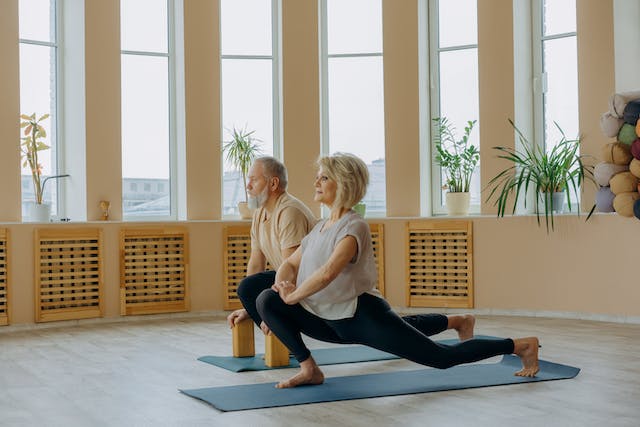
Yoga also helps release physical tension, which can make meditation more comfortable. A relaxed body can lead to a calmer mind during meditation sessions.
Many individuals who have integrated yoga and meditation into their lives share stories of transformation. They report feeling more balanced, mentally alert, and physically fit. These personal testimonials highlight the synergy of these practices in achieving mental and physical harmony.
People often find that the sense of peace cultivated in meditation carries over into their yoga practice, and the physical strength gained through yoga enhances their meditation experience. This feedback from practitioners underscores the power of combining meditation and yoga for holistic well-being.
Challenges and Misconceptions
As beneficial as these practices are, they are not without their challenges and misconceptions. It’s essential to address these to help individuals make the most of these practices.
- It’s Only for the Flexible: One common misconception about yoga is that it’s only for flexible people. In reality, yoga can be adapted to various fitness levels, and it can help increase flexibility over time.
- Meditation Requires a Clear Mind: Some people believe that meditation requires a completely empty and clear mind. This can be discouraging for beginners. In truth, it’s normal for thoughts to arise during meditation. The practice is about observing those thoughts without judgment.
- They’re Religious Practices: While yoga has roots in Hinduism, it is not a religious practice. Yoga can be enjoyed by people of all faiths or no faith. Similarly, meditation, though it has spiritual origins, can be secular and accessible to everyone.
Overcoming Obstacles in Practice:
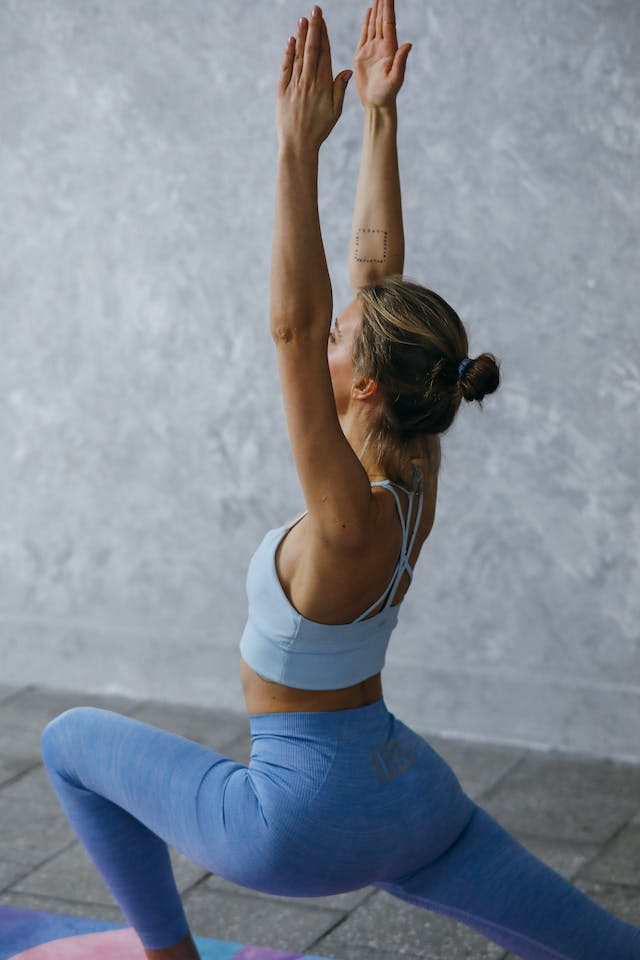
A common challenge is finding time with a busy schedule. To overcome this, start with short sessions. Even just a few minutes a day can make a difference. As you experience the benefits, you may naturally make more time.
Physical limitations can be an obstacle to yoga practice. However, there are many yoga styles and modifications that can accommodate various physical conditions. Consult with a qualified instructor who can adapt the practice to your needs.
It’s common to feel impatient or frustrated, especially when you don’t see immediate results. Remember that both meditation and yoga are lifelong journeys. The key is consistency and patience. The benefits often become more apparent over time.
The Importance of Consistency and Patience:
Consistency is crucial in reaping the benefits of meditation and yoga. Regular practice helps train the mind and body, creating lasting positive changes.
Patience is equally important. Rome wasn’t built in a day, and the same goes for the progress you’ll see in meditation and yoga. It’s normal to have off days, but staying committed to your practice will yield rewards over time.
Meditating & practicing yoga can indeed be life-changing practices, but they come with their share of challenges and misconceptions. It’s important to dispel myths, adapt practices to individual needs, and recognize that consistency and patience are key to reaping the full benefits. With a clear understanding and the right approach, these practices can become powerful tools for achieving mental and physical harmony.
